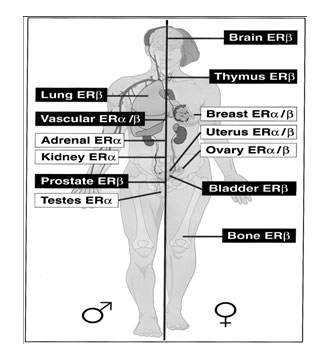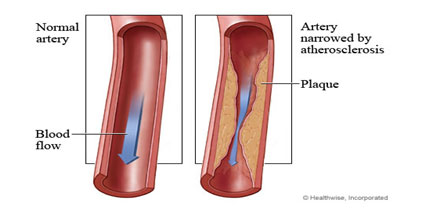Please sign in so that we can notify you about a reply
Menopace ISO is a safe alternative to HRT and world’s first ever non hormonal scientifically formulated nutrient therapy for the treatment of menopausal symptoms.
Menopace ISO is an accurately balanced combination of Isoflavones, specific micronutrients and select antioxidants which play a major role in supporting the woman’s body in its own natural processes during and after menopause.
Biotin – 30 mcg
P.A.B.A – 25 mg
Cal pantothenate – 20 mg
Iron – 12 mg
Boron – 2 mg
Zinc – 15 mg
Magnesium – 100 mg
Mangnese – 0.5 mg
Iodine – 225 mcg
Chromium – 80 mcg
Selenium – 100 mcg
| Composition: Each film coated tablet contains |
Brand positioning: In peri and post Menopausal Women
Punch line: Combats menopausal symptoms effectively.
USP’S of Menopace ISO • Offers Right strength of isoflavones 100 mg • Provides essential micronutrients and free radical fighters. • Relieves perimenopausal symptoms and reduces post menopausal risk. • Offers patients compliances with OD dosage. • Synergistic combination well documented & endorsed for management of menopausal symptoms by all Gynecologists & Physicians
Indications: - Perimenopause - Postmenopause - Surgical Menopause - Switch over from HRT
Dosage : One Tablet once daily
Benefits of Isoflavones in Menopause
Isoflavones give many health benefits to menopausal woman like • Isoflavones relieves menopause symptoms • Improves bone health • Lowers cholesterol • Lower cancer risk
Right strength of Isoflavones 100 is a clinically proven conclusion and the right strength of isoflavones
Clinical Evidence
“100mg Isoflavones is safe and effective alternative therapy for menopausal symptoms” Obstet Gynecol.2002:99(3):389-94
“Isoflavones supplementation substantially reduces the frequency of hot flushes” Obstet Gynecol.2001:Oct:98(4):702
“Isoflavone supplementation, 100 mg/day could not only prevent menopausal bone resorption but also increase BMD & decrease body fat”. Clin Exp Pharmacol Phvsiol 2004:31 Suppl 2:S39-S41
“Isoflavones significantly reduced serum total cholesterol, LDL cholesterol, and triglycerides” Am J Clin Nutr. 2005 Feb;81(2):397-408
“100 mg Isoflavones increase BMD and decrease body fat concomitantly with BMI reduction and prevent osteoporosis in menopausal women” Nutrition Journal 2005,1186/1475-2891-4-30
“100 mg Isoflavones prevent menopausal bone resorption, increase BMD and decrease body mass index” Clinical and Experimental Pharmacology and Physiology 2004; 31(2): S39
“100 mg Isoflavones offer benefits to the Cardiovascular system by reducing Cholesterol and LDL significantly” Obstet Gynecol. 2002; 99(3):389-94
“Isoflavones significantly reduces total cholestrol, LDL, triglycerides and significantly increases HDL Am J Cardiol, 2006 sep 1:98(5):633-40
“Isoflavones appear to have coronary benefits independent of cholesterol reduction”. Eur J Clin Nutr 57: 940, 2003: Nutr 19:280,2003:
“Daily Supplementation of Soy isoflavones reduces Menopausal symptoms”. Menopause 2012 Jul;19(7):791-8
Role of Micronutrients Specific micronutrients reduce the body’s sensitivity to decreasing estrogen levels and thus reduces intensity and frequency of perimenopausal symptoms.
Clinical Evidence :
“Recent clinical evidence suggests that many of the menopausal problems can be considerably reduced and often resolved by optimizing the intake of specific nutrients” “Value of micronutrient supplements in the prevention or correction of disorders accompanying the menopause” Rev Fr Gynecol.Obstect 85(12): 702:1990”
The Internet Journal of Gynecology and Obstetrics ISSN:1528-8439 Dr Suchitra Pandit Professor, Dept og Gyn&Obs,LTM Medical College Mumbai Evaluation of the efficacy and tolerability of Micronutrient supplementation in treatment of Post Menopausal Symptoms. Conclusion: Findings suggest that the multiple micronutrient supplements are effective in improving postmenopausal symptoms of hot flushes, night sweats, insomnia, depression, tiredness and for improving feeling of well-being,
“Vitamin E improves heat regulation capacity of the body and hence relieve the hot flushes”
“Vitamin E, A, C & Zinc maintains integrity and secretions of vaginal membrane”.
“Vitamin B6, Folic acid, Niacin & Magnesium reduces the anxiety and depression by controlling serotonin levels”
“Chromium, Magnesium, Zinc, Vitamin C, B6, & Vitamin B1 help control glucose balance’
“Low intake of folic acid, vitamin B6 & B12 have been demonstrated to be associated with Hyperhomocysteinemia (high levels of homocysteine), a potent and independent risk factor for CHD’
‘Magnesium, Copper, manganese, Zinc and other trace elements are essential for optimal bone matrix development and bone density sustenance in post menopausal woman. J Am Coll Nutr, 1993. Aug:12(4): 384-9
Free radical fighters – Selenium, Vitamin E, C and A • Reduces oxidative stress, so common with ageing and in menopausal women. • Antioxidants help to prevent atherosclerosis.
Treatment option for Menopause
 Hormone replacement therapy for Menopause
In HRT synthetic estrogen, progesterone is given to boost hormone levels.
There are a number of risks and side effects associated with HRT
Side effects include poor compliance and need for very long term treatment.
WHI trial involving 16000 healthy women on HRT aged 50 was stopped due to increased risk of:
• Breast cancer – 26%
• CHD – 29%
• Stroke – 41>#/p###
Hormone replacement therapy for Menopause
In HRT synthetic estrogen, progesterone is given to boost hormone levels.
There are a number of risks and side effects associated with HRT
Side effects include poor compliance and need for very long term treatment.
WHI trial involving 16000 healthy women on HRT aged 50 was stopped due to increased risk of:
• Breast cancer – 26%
• CHD – 29%
• Stroke – 41>#/p###
(July 17,2002-Vol 288:Pg.321-333 JAMA.)
Phytoestrogen (Isoflavone) Isoflavones are polyphenolic compounds that are capable of exerting estrogen like effects. For this reason, they are classified as phytoestrogens Isoflavones are structurally similar to the mammalian estrogen, estradiol. Because of this similarity in structure, they mimic the action of estrogen and provide estrogenic benefits.
Estrogen Receptors There are alpha and beta receptors for estrogen. Estrogens like all hormones act by binding to receptors located on the cell, which provokes reactions.
The alpha-receptors are linked with a risk of estrogen related cancers. On the other hand, the beta-receptors initiate only favorable effects. The repartation of these 2 types of receptors in the cells and organs is different. Different tissues appear to have different ratios of each receptor type. Isoflavones appear to bind better to estrogen receptor-beta than to estrogen receptor-alpha.
Post menopausal Risk
Osteopenia Osteopenia refers to bone mineral density (BMD) that is lower than normal peak BMD but not low enough to be classified as Osteoporosis.
Osteoporosis The word osteoporosis literally means “porous bones.” It occurs when bones lose an excessive amount of their protein and mineral content, particularly calcium. Over time, bone mass, and therefore bone strength, is decreased. As a result, bones become fragile and break easily.
PMO(post-menopausal osteoporosis) occurs in women after menopause. Decline in estrogen level, accelerates bone loss rapidly. Bone remodeling activity gets disturbed leading to increase in activity of osteoclasts and decrease in activity of osteoblasts. Continuous resorption of bone calcium, results into bones becoming porous, brittle and prone to fractures.
Coronary Heart Disease Estrogen deficiency leads to increase in LDL and triglycerides and fat deposition in arteries leading to vulnerability for atherosclerosis
To relieve Perimenopausal symptoms To minimize the Post menopausal risks
35 Symptoms of Perimenopause & Menopause
01. Hot flashes, night sweats and or cold flashes, clammy feeling 02. Irregular heart beat 03. Tingling in the extremities 04. Irritability 05. Mood swings, sudden tears 06. Trouble sleeping through the night (with or without night sweats) 07. Irregular periods: shorter, lighter, heavier, flooding, phantom periods; shorter cycles; longer cycles 08. Dry vagina 09. Osteoporosis (after several years) 10. Crashing fatigue 11. Anxiety, feeling ill at ease 12. Feelings of dread, apprehension, doom 13. Difficulty concentrating, disorientation, mental confusion 14. Disturbing memory lapses 15. Incontinence, especially upon sneezing, laughing; urge incontinence 16. Itchy, crawly skin 17. Changes in fingernails: softer, crack or break easier 18. Aching, sore joints, muscles and tendons 19. Increased tension in muscles 20. Breast tenderness 21. Tinnitus: ringing in ears, bells, etc 22. Headache change: increase or decrease 23. Gastrointestinal distress, indigestion, flatulence, gas pain, nausea 24. Sudden bouts of bloat 25. Depression 26. Loss of libido 27. Exacerbation of existing conditions 28. Increase in allergies 29. Weight gain 30. Thinning or loss of hair of head, pubic, or whole body;increase in facial hair 31. Dizziness, light-headedness, episodes of loss of balance 32. Changes in body odor 33. Electric shock sensation under the skin and in the head 34. Gum problems, increased bleeding 35. Burning tongue, burning roof of mouth, bad taste in mouth, change in breath odor.
No posts found

 Login with Google
Login with Google
